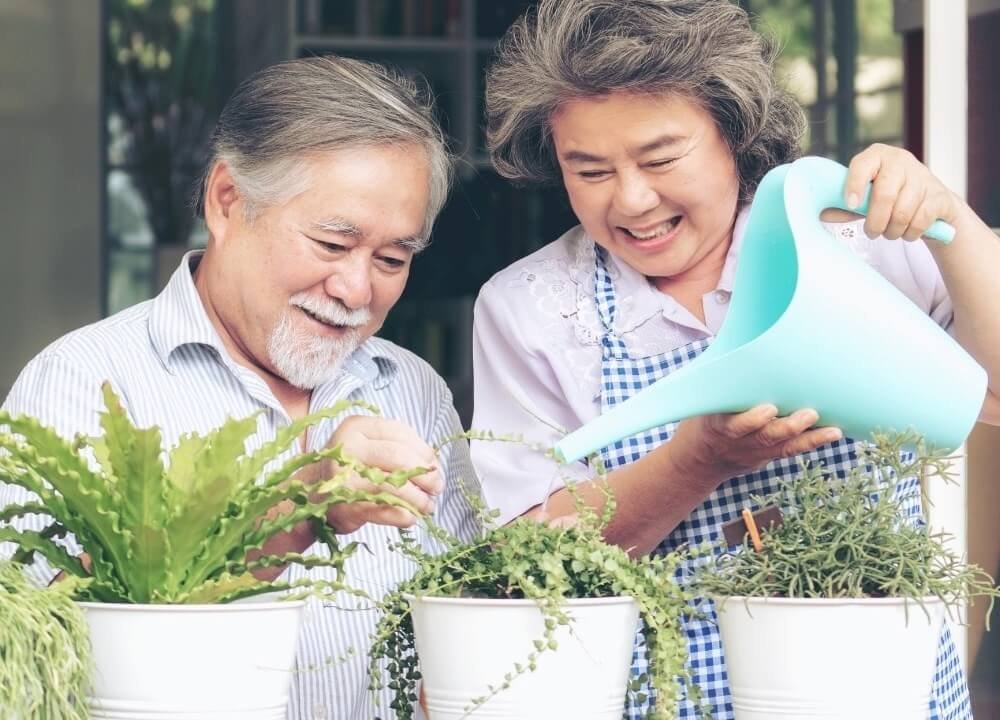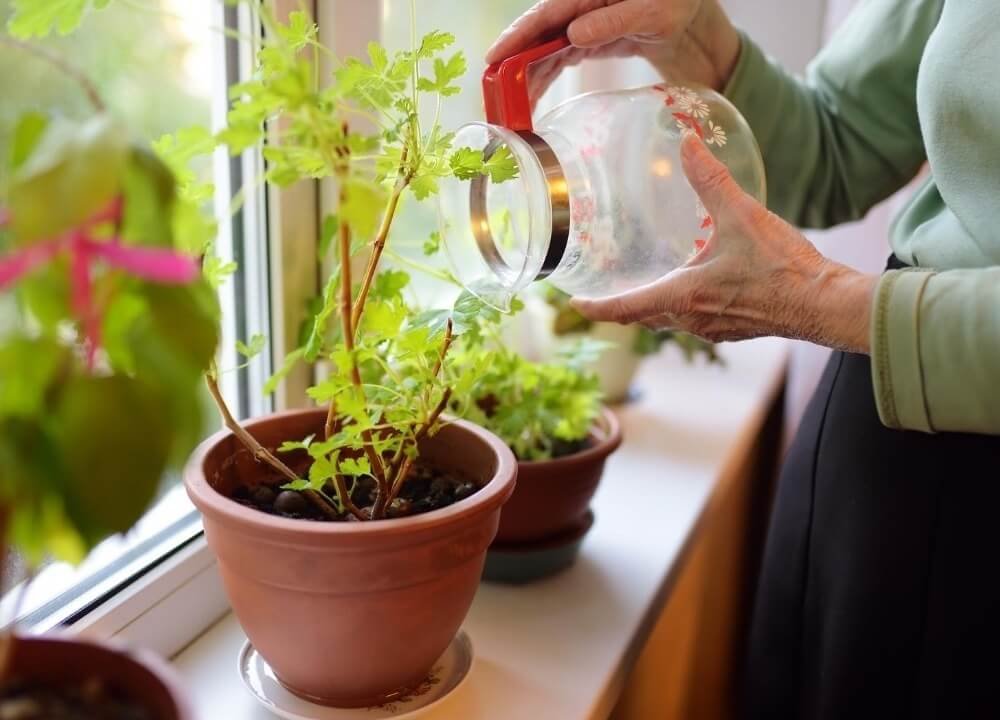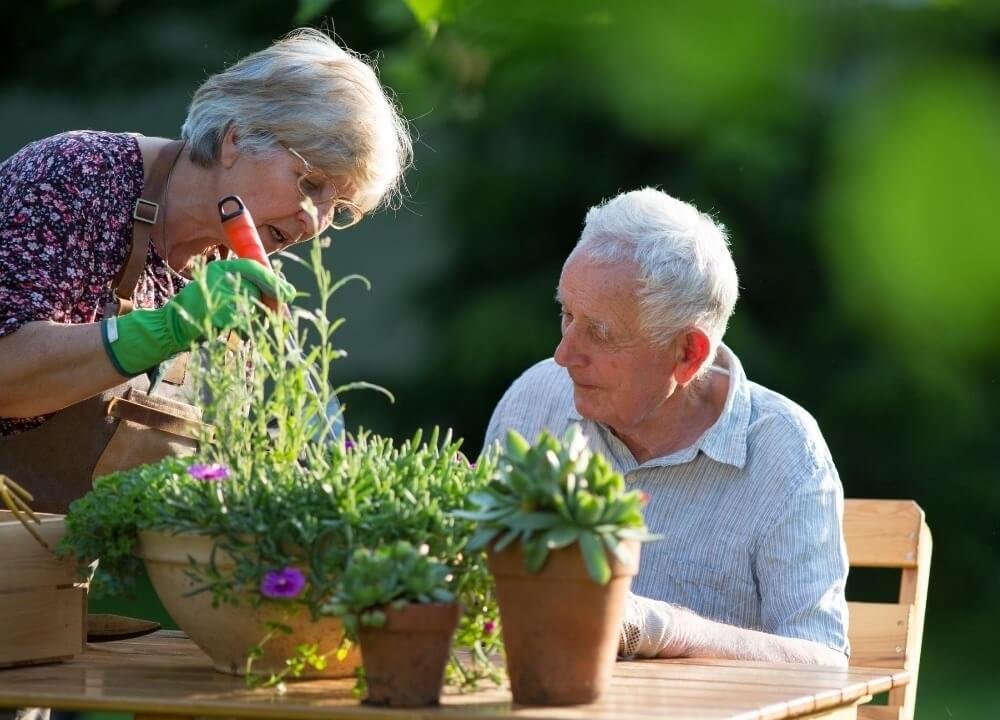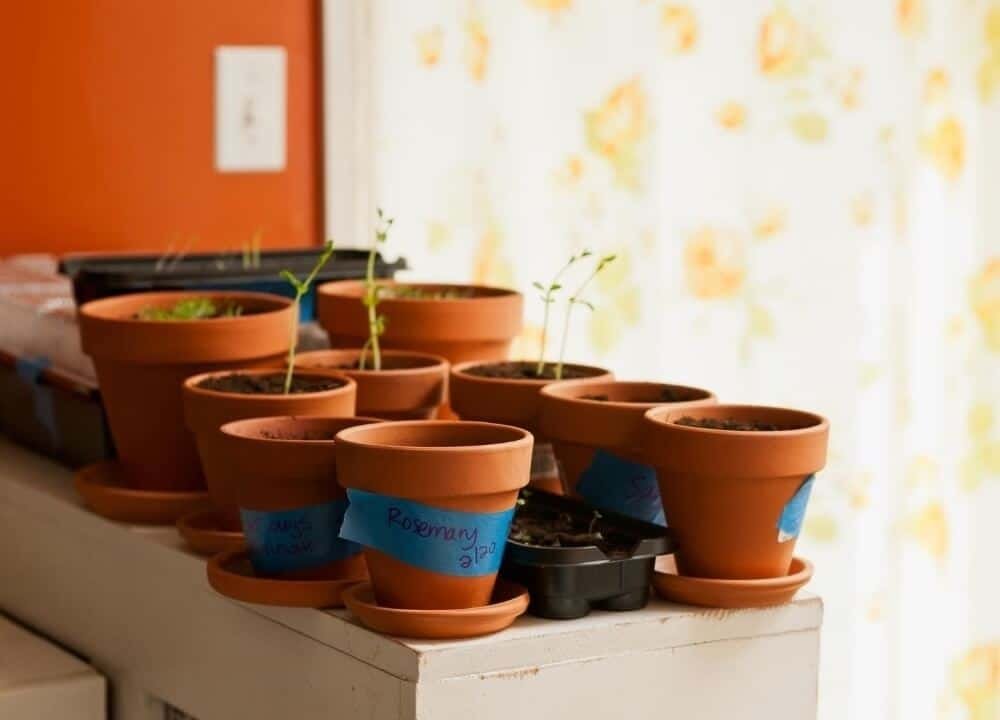The healing power of plants and nature has been realized for centuries. The last several decades of scientific research has yielded overwhelming evidence of its efficacy. In this article we look at the benefits of a therapeutic indoor garden for dementia.
Gardening, and interaction with live plants, is very beneficial to the physical, mental and social health of human beings.
It is one of the more effective natural remedies for dementia.
This is happy news for all humans, but it’s especially exciting for people with certain hard-to-treat health conditions, such as dementia.
Contents
- Therapeutic Gardening for People With Dementia
- Interaction with plants benefits people with dementia
- Indoor gardening can bring about many desirable health outcomes
- How to create a therapeutic indoor garden for someone with dementia
- How will an indoor garden affect your loved one’s life?
- Related Posts
Therapeutic Gardening for People With Dementia
While there is still no cure for most types of dementia, gardening has been proven to offer a very effective method of relieving some of dementia’s distressing symptoms including:
- Behavioral challenges
- Mood disturbances
- Sleep disruptions
Furthermore, gardening and interaction with plants has been shown to improve the quality of life for people with dementia by:
- Enhancing their general well-being
- Improving their level of functioning
- Reducing their use of psychotropic medication
- Decreasing their incidence of serious falls
Interaction with plants benefits people with dementia

Sensory stimulating interaction with plants has been determined to be therapeutic to people living with dementia.
Tactile stimulation, or touching live plants, has been shown to promote psychological feelings of relaxation along with a physiological calming response in the body.
Meanwhile, olfactory stimulation, or smelling certain natural aromas, has been proven to:
- Enhance feelings of calm
- Increase alertness
- Improve mood
- Stimulate memories
Visual stimulation, or viewing images of nature, has been shown in numerous studies to have these health-promoting effects:
- Significantly increase feelings of comfort
- Significantly increase feelings of relaxation
- Reduce biochemicals related to stress
Listening to the gentle sounds of nature is well known to promote feelings of calm and offer these benefits:
- Aid in stress recovery
- Increase attention
- Promote relaxation
- Decrease feelings of anxiety
- Reduce agitation
Many studies confirm that spending time outside in nature will create a wealth of positive effects on the health, happiness and well-being of people with dementia.
The science confirms these effects occur indoors as well.
Indoor gardening can bring about many desirable health outcomes

Indoor gardening can be especially effective when working with a certified horticulture therapist – but even without one, the benefits of simply interacting with plants can be profound.
A therapeutic indoor garden can be any size. Each garden is as unique as the individual for which it was created.
How to create a therapeutic indoor garden for someone with dementia

Ideally, you can start by selecting an assortment of sensory-stimulating plants. Look for colorful flowers, interesting foliage and pleasant aromas.
However, don’t worry if this isn’t possible or practical – even a single plant can be therapeutic. For some individuals, or in some circumstances, a single plant might be a better choice than a whole garden.
There aren’t too many rules or restrictions when it comes to indoor dementia gardens, but there are a few.
1. Plants and any additives should be non-toxic

Double check every plant for toxicity before including it.
Many people don’t realize, for example, that poinsettias are poisonous. Lilies, ivy, philodendron, jade and oleander are other common poisonous houseplants, and there are many more.
There shouldn’t be much need for insecticides or other additives in an indoor garden.
If you apply fertilizer or any other substance, avoid a potential crisis by taking proper precautions.
- Keep all chemicals or substances securely put away when not in use.
- Read labels thoroughly to understand any potential dangers associated with anything you use.
Err on the safe side; assume that any part of every plant could be ingested and plan accordingly.
2. Avoid thorns, stickers and other sharp points or edges

Avoid thorny roses, prickly cacti and other sharp plants that may cause injury or discomfort.
Also, be aware of sharp points or edges on the garden tools. It may be okay for an experienced gardener with dementia to use a familiar tool, even if it is sharp.
There is something extremely therapeutic about using familiar items!
However, depending on the person’s situation, it may not be safe or appropriate for them to use particular tools or items.
Use good judgment to determine the risks and benefits of the person using a potentially dangerous item.
Since people who have dementia often experience ups and downs from day to day, it’s possible that using an item could be unsafe one day but not the next.
Re-evaluate the safety of the situation daily or as needed.
In most cases, any sharp tools should be kept secured when unsupervised.
3. Expect interaction and recognize success

Be sure to set up the garden so that the person can interact with it to the extent desired.
This may mean frequent handling, overwatering or other behavior that might actually not be in the best interest of the plants themselves.
If possible, select hardy plants that will tolerate the amount of care – or neglect – they are likely to receive.
Get creative to create success
If the person will be watering the plant or garden, find a small watering can that won’t get too heavy when full.
This can also keep flooding to a minimum if the person enjoys watering the plants frequently.
Another solution to potential over-watering could be to ensure plants have plenty of drainage. Elevate them with pebbles above extra-large drip-trays so they aren’t soaking in overflow.
Alternatively, it could be as simple as putting up a sign that says “Already Watered” – or finding plants that love lots of water!
Opting for a hydroponic system could be another solution.
Knowing the person and their needs, and then tailoring solutions accordingly will lead to the best successes.
It’s important to keep perspective on the goal of this garden: for the person to engage with it.
Don’t worry about imperfection if it would discourage the person with dementia from interacting with the garden.
If the person is engaging with the garden, it is a success!

There are many ways that a person with dementia can interact or engage with the garden.
Depending on their interests and abilities, any of the following activities may be very therapeutic engagement:
- Choosing which plants, or types of plants, to grow
- Sharing their opinions, experience or thoughts about the garden
- Reminiscing about past gardening or plant experience
- Using hands or a gardening spade to fill pots with soil
- Planting seeds or starts
- Watching the plants develop
- Simply sitting near the indoor garden
- Smelling, touching or looking at the fruit, flowers or foliage
- Watering the plants
- Deadheading flowers, harvesting, pruning or providing other care
- Cutting flowers or arranging bouquets
- Cooking or crafting with what they have grown
- Picking the plants (even at “non-traditional” or “non-ideal” times)
Any other activity not listed above that allows the person to enjoy, experience or interact with the garden area or individual plants is also considered a success.
4. Find the right light
Find a suitable location to start a garden
A sunny south-facing window is perfect. If that’s not available, adding a grow light can help. Grow lights are designed to simulate sunlight. They can even enable plants to grow year-round.
Consider a countertop hydroponic system for simplicity and ease
Another alternative to consider may be a self-contained countertop hydroponic system. These systems are designed to make gardening extremely easy and successful.
“Hydroponic” means that the plants grow without soil – just water, light and nutrients. Basically, all that is required in many of these systems is to drop a seed into a designated area and then ensure that the device’s water reservoir is kept full.
They usually provide nutrient tablets to drop into the water every couple of weeks or so.
All in all, these systems tend to require very little work for a countertop full of fresh herbs, greens, strawberries, or other lush plant life.
Keep safety foremost in mind
If using a grow light or other electrical devices in a dementia garden, take extra care to be sure that any light bulbs or cords are handled safely.
Look for LED grow lights when possible, which emit less heat than their counterparts.
Be sure cords are kept well out of walkways. Taping them into place may be a good idea, depending on the particular set up.
5. Choose good plant candidates

Select plants that are non-toxic and not sharp. If possible, find plants that stimulate the senses, memories or both.
Most of all, don’t worry too much about getting everything “right.” Just enjoy the experience, and ensure that the person with dementia does too.
That being said, the following is a list of some generally good candidates for an indoor dementia garden.
Lavender
- This lovely flowering plant has a pleasant aroma and phytochemicals known to promote relaxation. It needs a lot of heat and light to thrive.
Herbs
- Edible, aromatic and purposeful! Using herbs in cooking may even help to stimulate an appetite.
- Basil likes its soil to be kept moist while oregano, thyme and rosemary prefer less frequent watering. All of these herbs enjoy warm sunny conditions.
- Mint, parsley and chives fare well with lower levels of heat and sunlight.
Jasmine
- This pretty vine boasts small white flowers with a strong sweet aroma that can easily fill a room. It can be grown indoors in a partly sunny location where temperatures remain on the cooler side. They prefer growing in moist soil on a trellis or support.
Lemon balm
- Lemon balm has a strong sweet lemony aroma. It prefers lots of light and well-drained soil. It can be enjoyed as cuttings in a vase or bouquet. Moreover, lemon balm has long been prized for its medicinal properties. Among other things lemon balm is known for calming the mind, improving mood and enhancing cognitive function.
Spider plant
- Appreciated by many for their ability to survive without much sun or attention, spider plants are among the easiest houseplants to grow.
African violet
- African violets are popular houseplants due to their velvety leaves and pretty purple flowers. They can blossom year-round under the right conditions. They prefer indirect light and are sensitive to overwatering.
Hoya
- Also known as a wax plant, honey plant or wax vine, hoyas are popular hanging or climbing houseplants. They are pretty, hardy and low maintenance. They tolerate various lighting conditions but grow best and produce flowers in bright light. Avoid overwatering.
Baby rubber plant
- Another easy to grow houseplant, the baby rubber plant prefers moderate light and somewhat cooler temperatures. It doesn’t like to be overwatered, but it does appreciate humidity. Misting it regularly would make a good activity.
Lettuce, kale or salad greens
- These grow quickly and easily in a sunny location.
Scallions
- Also known as green onions, these aromatic plants grow quickly in bright sunlight. They take longer from seed, but can be regrown from kitchen scraps within days or weeks simply by placing the roots in water or soil. Cut off the green tops for cooking or eating and the plant will continue to grow.
There are countless more good choices of what to grow in your unique indoor dementia garden.
How will an indoor garden affect your loved one’s life?

There are so many reasons to grow an indoor garden with, or for, someone with dementia.
Science has proven it with countless studies, but what really matters are the effects each individual sees in his or her own life.
Even if you have access to an outdoor garden, having plants indoors as well will only increase the therapeutic benefits.
So, let’s get growing!





![15 Lewy Body Dementia Symptoms [LBD] lewy body dementia symptoms](https://readementia.com/wp-content/uploads/2019/05/lewy-body-dementia-symptoms.jpg)

